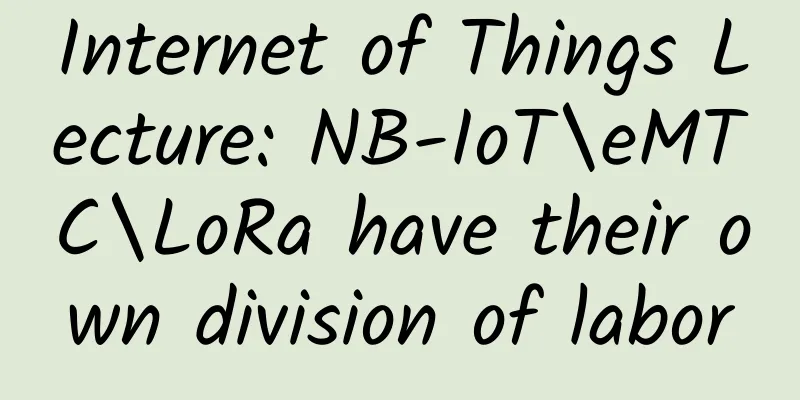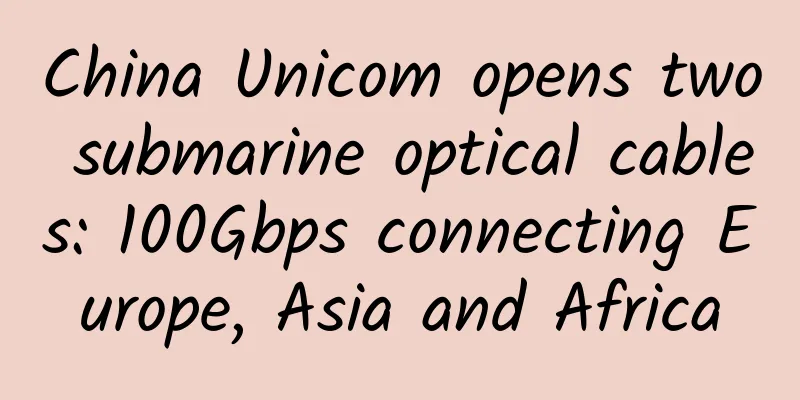Internet of Things Lecture: NB-IoT\eMTC\LoRa have their own division of labor

|
In 2018, the year of the explosion of IoT connections, more than 500 million smart devices will be connected to the network. What protocols are used to connect these devices? NB-IoT is undoubtedly the big brother. It is highly cost-effective and has been commercially used on a large scale across the country. The shared bicycles around us use it; eMTC is the second, and its advantages are mobility, positioning and voice support; LoRa transmission distance can reach about two kilometers. At present, the IoT communication network of the three major operators has been basically completed, and these three IoT protocols have their own division of labor in practical applications.
The Internet of Things will be everywhere NB-IoT is the protagonist NB-IoT is called "Narrowband Internet of Things". Its characteristics are low frequency band, low power consumption, low cost, high coverage and high network capacity. It can be directly deployed on GSM network, UMTS network or LTE network. One base station can provide 50-100 times more access terminals than traditional 2G, Bluetooth and WiFi, and only one battery is needed for the device to work for ten years. NB-IoT modules are basically used on shared bicycles for unlocking services.
NB-IoT technology is now the most widely used As of June 2018, China Telecom has commercialized NB-IoT in 31 provinces, cities and districts; China Mobile has announced the commercial use of NB-IoT networks in 11 provinces, and the first phase of NB-IoT network construction covers 346 cities, achieving end-to-end large-scale commercial use; China Unicom has conducted trial commercial NB-IoT in 11 provinces across the country, achieving full coverage of urban areas in Beijing, Shanghai, Tianjin and other cities, and plans to achieve nationwide coverage by the second quarter of this year. eMTC is just getting started eMTC is an IoT technology based on the evolution of LTE networks. eMTC is deployed based on cellular networks and is three times faster than NB-IoT. Devices can directly access existing LTE networks by supporting 1.4MHz RF and baseband bandwidth. The key capabilities of eMTC are high speed, mobility, positioning, and voice support. Comparison between eMTC and NB-IoT Compared with NB-IoT, eMTC has more application scenarios and is faster than NB-IoT. The three major operators are accelerating the deployment of eMTC networks. China Telecom has launched large-scale testing of the eMTC network and is expected to realize eMTC trial commercialization this year; China Mobile is fully betting on the 900MHz frequency band and will trial commercial eMTC this year; China Unicom started the construction of the eMTC commercial core network in the first quarter of this year, and it is expected that the eMTC core network will have full network access capabilities by the third quarter of this year. LoRa prefers enterprise scenarios LoRa stands for Long Range, which is an ultra-long-distance wireless transmission technology based on spread spectrum technology. LoRa operates in unlicensed frequency bands below 1GHz, and no additional frequency band fees are required when applied. LoRa belongs to the narrowband Internet of Things, and its deployment cost and energy consumption are lower than NB-IoT. However, LoRa cannot be deployed directly on the operator's base station, and enterprises need to deploy and operate it themselves. It is suitable for application scenarios such as enterprise parks, smart agriculture, and logistics bases.
LoRa Technology At present, the three major operators only regard it as an alternative technology. Conclusion Although there are three mainstream IoT protocols, the three major operators have unanimously chosen NB-IoT as the technology with the highest priority for construction and promotion. However, eMTC has rich application prospects, so operators are accelerating its construction. LoRa is small and has little influence, but it has been favored by Alibaba, Ruijie and other manufacturers who provide solutions for enterprises and industries. NB-IoT is the largest in the world, but eMTC and LoRa have broader commercial prospects in the future. |
<<: When purchasing a wireless router, which one is better, “single-band” or “dual-band”?
>>: Emerging 5G technology puts SIM-based IoT devices at greater risk
Recommend
15 Best Practices for Fiber Optic Cable Installation in Data Centers
CABLExpress recently released its latest Fiber Op...
spinservers: $99/month - 2*E5-2630Lv3, 256GB memory, 2*1.6TB SSD, 30TB/10Gbps bandwidth, Dallas data center
spinservers recently released several promotional...
Maxthon Hosting: 56 yuan/month Hong Kong CN2-2GB/40G SSD/300GB/15M Bandwidth
Aoyo Zhuji is one of the foreign hosting services...
Three lives and all things go hand in hand with wisdom | Beijing Unicom and Huawei jointly release the results of 5G Capital innovation project
[Shanghai, China, November 12, 2020] During the 2...
HostKvm Double 11 60%-80% off, top up $50 get $10, top up $100 get $25
HostKvm also released a promotional plan for Doub...
Home users use routers to surf the Internet, so how many mobile phones can be connected to one router at most?
I think everyone is still curious about this ques...
Deloitte: 86% of network executives said 5G and Wi-Fi 6 will change the industry within 3 years
Deloitte's "Study of Advanced Wireless A...
[Black Friday] HostDare: 15% off Los Angeles CN2 GIA line VPS, starting at $42.4 per year
HostDare also launched this year's Black Frid...
F5 redefines ADC in the AI era
F5 recently explained how the application deliver...
Understand Huawei Enterprise BG's "123456" product strategy in one article and learn about the new +AI series products
[51CTO.com original article] "Huawei Enterpr...
How 5G deployment will impact enterprise network hardware and software
For most enterprises, IT teams will deploy fifth-...
Outlook for domestic 5G development in 2021 (Part 2): Challenges
Relying on its significant advantages of high spe...
Exposing "black data": Your personal information has been passed through several hands
[[188851]] According to feedback from industry in...
AkkoCloud: CN2 GIA lines in the US/Germany/UK, starting at 299 yuan per year, 300-600Mbps bandwidth
AkkoCloud is a Chinese VPS service provider estab...
How Fiber Optic Networks Can Boost Small Business Operations
What is Fiber Optic? This is a form of internet t...









